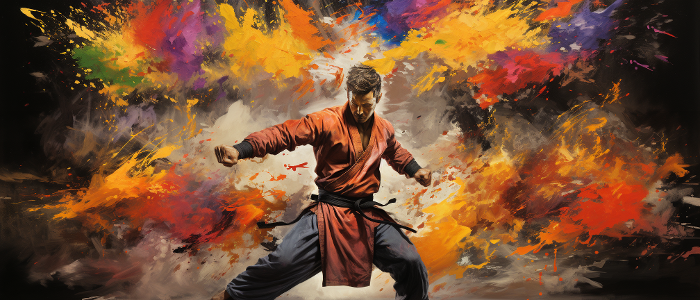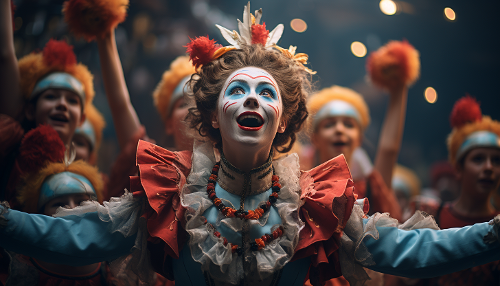Martial arts, as a practice that blends physical prowess with mental discipline, has captivated participants across the globe and the United States is no exception. From bustling cities to quiet towns, the proliferation of martial arts classes offers a unique window into cultures worldwide while remaining deeply ingrained in local communities.
The beauty of martial arts lies in its diversity and adaptability. Styles originating from every corner of the world, such as the precise strikes of Karate from Japan, the dynamic movements of Taekwondo from Korea, and the grappling techniques of Brazilian Jiu-Jitsu, are all readily available in the U.S. This global tapestry of martial arts provides a fascinating mixture of cultural traditions and philosophies, promoting not just physical fitness, but also a sense of global connectivity and understanding.
Despite this international backdrop, the quest for "martial arts near me" often leads to highly localized experiences. Local dojos, gyms, and community centers offer classes tailored to their communities, providing accessible and personalized training. Instructors often bring their own unique blend of experiences and backgrounds, enriching the learning environment further. This local focus ensures that martial arts training is not just about mastering a set of techniques, but also about building a sense of camaraderie and belonging among participants.
Finding a martial arts class nearby means embarking on a journey that is both personal and universal. It means tapping into an ancient well of knowledge that spans the globe, yet doing so within the comfort of one’s own neighborhood. The quest for martial arts training thus serves as a bridge between the local and the global, offering a pathway to personal growth, fitness, and an appreciation of the rich tapestry of martial arts traditions the world over.
Types of Martial Arts Available
Learn about the variety of martial arts disciplines available in your area. From karate to taekwondo, find a style that fits your interests and fitness goals.
- Aikido: Fluid movements for peaceful self-defense. Harmonizing not confronting.
- Brazilian Jiu-Jitsu (BJJ): Mastering ground fighting with skillful grace.
- Capoeira: A mesmerizing blend of martial arts and dance rhythm.
- Judo: The art of throws and takedowns, building respect and resilience.
- Karate: Discipline through striking and defense, a path to confidence.
- Kendo: The traditional way of the sword. Precision meets heritage.
- Kickboxing: Energizing blend of martial arts and boxing for a great workout.
- Krav Maga: Practical self-defense for real-life situations. Empowering and direct.
- Kung Fu (Wushu): A diverse world of Chinese martial arts. Styles for every spirit.
- Muay Thai: The art of eight limbs. Combines combat techniques with tradition.
- Taekwondo: Dynamic kicking and striking. A journey of strength and spirit.
- Tai Chi: Gentle martial art focusing on flow and mindfulness. Inner peace outward.
- Wrestling: The timeless art of grappling, focusing on technique and endurance.
- Hapkido: A dynamic Korean martial art focusing on self-defense and harmony.
- Iaido: The peaceful Japanese art of the sword draw. Beauty in every motion.
- Jiu-Jitsu (Traditional): Ancient art emphasizing technique over strength. Sublime strategy.
- Jojutsu: Mastery of the stick with swift, striking maneuvers. Tradition in motion.
- Kenpo: A fast-paced blend of striking techniques. Agility meets strategy.
- Kyudo: Japanese archery that values precision, meditation, and form. Serenity in focus.
- Ninjutsu: Stealth and adaptation. The intriguing art of the ninja.
- Pencak Silat: Southeast Asian martial art with flowing moves and cultural depth.
- Sambo: Russian martial art combining judo and wrestling. Intense and practical.
- Savate: French kickboxing. Elegance and efficiency in each strike.
- Sumo: More than a sport, a Japanese cultural treasure. Strength and strategy.
- Systema: Russian martial art focusing on natural body movements. Fluid and effective.
- Wing Chun: A focused, close-range combat style. Quick and efficient.
The Role of Martial Arts in Adult Fitness
Martial arts offer a comprehensive workout that benefits the body and mind, making them an excellent choice for adults seeking to enhance their physical fitness and mental well-being. For many adults, stepping into a martial arts class may be a new venture, but it provides a dynamic alternative to traditional gym workouts. The practice not only improves strength, flexibility, and stamina through various techniques and drills but also requires mental focus and discipline, aiding in stress relief and mental clarity.
Martial Arts as a Tool for Personal Development
Beyond physical fitness, martial arts instill values such as respect, perseverance, and self-discipline. These qualities are invaluable in personal and professional life, fostering a sense of accomplishment and confidence. Adults, whether beginners or seasoned practitioners, find that martial arts offer a unique platform for continuous learning and self-improvement.
Impact on Troubled Youths
Martial arts can play a transformative role for troubled youths. The structured environment of martial arts classes provides a sense of stability and discipline that may be lacking in their lives. It teaches them constructive ways to channel their energy and aggression, fostering self-control and respect for others. Moreover, the inclusive community in martial arts dojos offers a supportive network that can impact their social behavior positively. The sense of belonging and achievement through martial arts can steer troubled youths towards a more positive path, demonstrating that it’s never too late to change direction and lead a fulfilling life.
Benefits of Martial Arts
Participating in martial arts enhances not only physical strength but also mental and emotional well-being. It's a comprehensive approach to health that benefits all aspects of life.
The Significance and Progression of Karate Belt Colors
Karate, a martial art steeped in tradition and discipline, employs a belt system that is much more than just an indicator of rank. Each belt color represents a step in the journey of learning, reflecting the skill, knowledge, and personal growth of the practitioner. Below, we explore the significance of each belt color, the order in which they are awarded, and the milestones they signify.
- White Belt: The journey begins with the white belt, symbolizing purity and the starting point. It represents a blank slate or seed, signifying the student's willingness to learn and embrace the basics of Karate. Achieving a white belt involves understanding basic stances, punches, and kicks, along with the dojo's etiquette.
- Yellow Belt: Next comes the yellow belt, symbolizing the first rays of sunlight that give life to the seed. Students start to open up to the teachings of Karate, learning to blend basic techniques into more fluid movements. Achieving this belt requires demonstrating improved forms and an understanding of simple katas (forms).
- Orange Belt: The orange belt represents further growth, akin to the first strong rays of the sun. At this stage, students refine their techniques and begin to apply them with more confidence and strength. To move beyond the orange belt, one must demonstrate proficiency in basic katas and sparring techniques.
- Green Belt: The green belt symbolizes a growing plant, reaching up towards the sun. This stage is all about growth and building—one's skills become stronger and more refined. Earning a green belt involves mastering intermediate katas and showing competence in sparring, reflecting a deeper understanding of Karate principles.
- Blue Belt: Representing the sky, the blue belt signifies that the student is expanding their horizon of knowledge. This level focuses on advanced techniques and deeper philosophical understanding of Karate. To achieve a blue belt, students must display proficiency in advanced katas and effective sparring strategies.
- Brown Belt: The brown belt is symbolic of the maturing tree, with roots running deep. Students at this level refine their skills and start to assist beginners, preparing for leadership roles in their dojo. Achieving a brown belt requires mastery of all katas, demonstrating effective teaching techniques, and excelling in sparring.
- Black Belt: The pinnacle is the black belt, symbolizing mastery and darkness beyond the sun. It represents the journey’s beginning rather than its end, as learning and self-improvement are endless in Karate. Achieving a black belt involves mastering the entire curriculum, demonstrating leadership, and committing to the lifelong practice of Karate.

Each belt in the Karate system marks a significant milestone in the practitioner's journey, embodying personal growth, discipline, and a deepening understanding of Karate's philosophies and techniques. Progressing through the belts is not just about physical prowess but also about developing character and wisdom.
While many martial arts are recognized for their use of a belt ranking system to denote a practitioner's level of expertise, not all adopt this method, and those that do have distinct approaches that reflect their individual philosophies and technical focus.
Karate, with its roots planted firmly in Okinawa, Japan, is known for a belt progression that traditionally ranges from white through various colors to black. Each color represents a step in the martial artist's journey towards complete understanding and mastery of the art, symbolizing the transition from novice to expert, with a strong accent on individual progress, discipline, and the honing of skills.
Differing from Karate's approach, Brazilian Jiu-Jitsu emphasizes its rigorous grappling and ground combat techniques in its belt hierarchy. Starting from white, practitioners move up through blue, purple, brown, and black belts, each belt often segregated by stripes that signify smaller increments of progress. Unique to BJJ, coral belts honor those with extraordinary contributions to the martial art, typically given to masters of the 7th and 8th-degree black belt ranks, while a red belt is reserved for the highest echelons of mastery, the grandmasters at 9th or 10th degree.
Judo's belt system has also become a point of reference for modern martial arts, with its pathway from white to black incorporating intermediate belts such as orange, green, and blue before reaching the senior ranks of brown and black. In contrast to Karate, Judo's ranking heavily emphasizes competitive prowess and the skillful execution of throws and holds against an opponent, reflecting the combative and technical nature of the art.
In Taekwondo, a martial art closely associated with Korea, practitioners also follow a graded belt system beginning with white and concluding with black. However, Taekwondo interjects unique colors like gold, purple, and navy into its ladder of progression. The belt ranks in Taekwondo underscore a practitioner's development in the art's dynamic striking and kicking techniques as well as their overall physical fitness.
Each martial art shapes its belt ranking system in a way that embodies its core values, combat focus, and overarching philosophy. The shared concept of ascending from a white belt to higher ranks including the coveted black belt underpins a common narrative of personal growth and achievement, despite the diverse interpretations and significance of each belt within the spectrum of these distinctive disciplines.
- Martial Arts in San Francisco
- Martial Arts in New York
- Martial Arts in Frisco
- Martial Arts New York City
- Martial Arts Corpus Christi
Kickboxing Classes
Kickboxing is an energetic and dynamic fitness option that combines cardio and agility training. It's ideal for those looking to enhance their fitness with a high-energy routine.
Martial Arts for Adults - Advanced
For those seeking a challenge, advanced adult martial arts classes offer a way to deepen martial arts skills and physical fitness in a community-oriented environment.
Kickboxing for Kids
Kickboxing classes for kids focus on fitness, discipline, and fun. These classes are tailored to be safe and engaging, helping children build confidence and physical coordination.
The Growing Allure of Kickboxing Over Karate in Modern Martial Arts and MMA
The dynamic landscape of martial arts is witnessing a shift, with kickboxing increasingly capturing the interest of enthusiasts and practitioners, potentially overtaking karate in terms of popularity. This trend is influenced by various factors, including the direct application of kickboxing techniques in self-defense scenarios and its potent blend of power and technique.
Karate and kickboxing, each with a rich heritage and global following, cater to a diverse audience, spanning different countries and age groups. The disciplined, traditional approach of karate contrasts with kickboxing's more immediate and assertive methods, making the latter appealing to those seeking practical combat and self-defense skills.

In the realm of Mixed Martial Arts (MMA), the impact of both karate and kickboxing is undeniable. Kickboxing, with its roots intertwined with those of karate, excels in the MMA cage due to its comprehensive approach to striking, combining the finesse of karate's punches and kicks with the raw power of boxing. This fusion creates fighters who are versatile, aggressive, and formidable in the stand-up game. On the other hand, karate's strategy, emphasizing distance control, rapid strikes, and mobility, offers a different set of advantages that have proven effective in the MMA setting.
Fighters originating from either background bring a unique set of skills to MMA, enriching the sport with a wide range of techniques and strategies. Kickboxers are lauded for their powerful strikes and relentless aggression, while karate practitioners are admired for their strategic approach, precision, and ability to deliver unexpected, fight-ending blows. This diversity not only makes MMA more engaging to fans but also underscores the vitality of incorporating varied martial arts disciplines for a well-rounded fighting skill set.
As MMA continues to soar in global popularity, the contributions of kickboxing and karate remain pivotal in shaping the sport's evolution and broadening its appeal. The inclusion of these martial arts enriches the fighter roster with athletes capable of engaging in captivating battles that highlight strength, strategy, and the art of combat. Through the lens of MMA, the engaging clash of styles between kickboxing and karate practitioners showcases the effectiveness and distinctive qualities of each discipline, captivating a worldwide audience and solidifying their places in the diverse world of martial arts.
Embracing Martial Arts in Your Community
As you seek to embark on a martial arts journey, the search for "martial arts near me" unlocks the door to a community rich with varied traditions, disciplines, and schools of thought. Whether your interest leans towards the powerful strikes and fast-paced action of kickboxing or the strategic, disciplined foundations of karate, each practice offers its own unique rewards and challenges. The rising tide of kickboxing, with its prominence in self-defense and influence in Mixed Martial Arts (MMA), reflects the modern martial artist's desire for dynamic and practical combat skills. Yet, karate's timeless techniques and focus on self-mastery continue to garner devotion from students who value the traditional elements of martial arts.
Local dojos and gyms, often just a short search away, provide hubs where the martial arts spirit thrives, fostering personal growth, physical fitness, and a sense of community. In the intimate setting of a nearby training center, you can delve into the craft under the guidance of seasoned instructors and alongside peers with shared aspirations. Regardless of the chosen discipline, these martial arts establishments stand as beacons in your neighborhood, bridging the physical and philosophical aspects of martial arts while tailoring their teachings to practitioners both young and old.
In conclusion, whether kickboxing or karate piques your interest, seeking out "martial arts near me" is the first step towards discovering a transformative world where fitness meets philosophy, and every strike and stance carries a legacy of centuries-old martial traditions.




